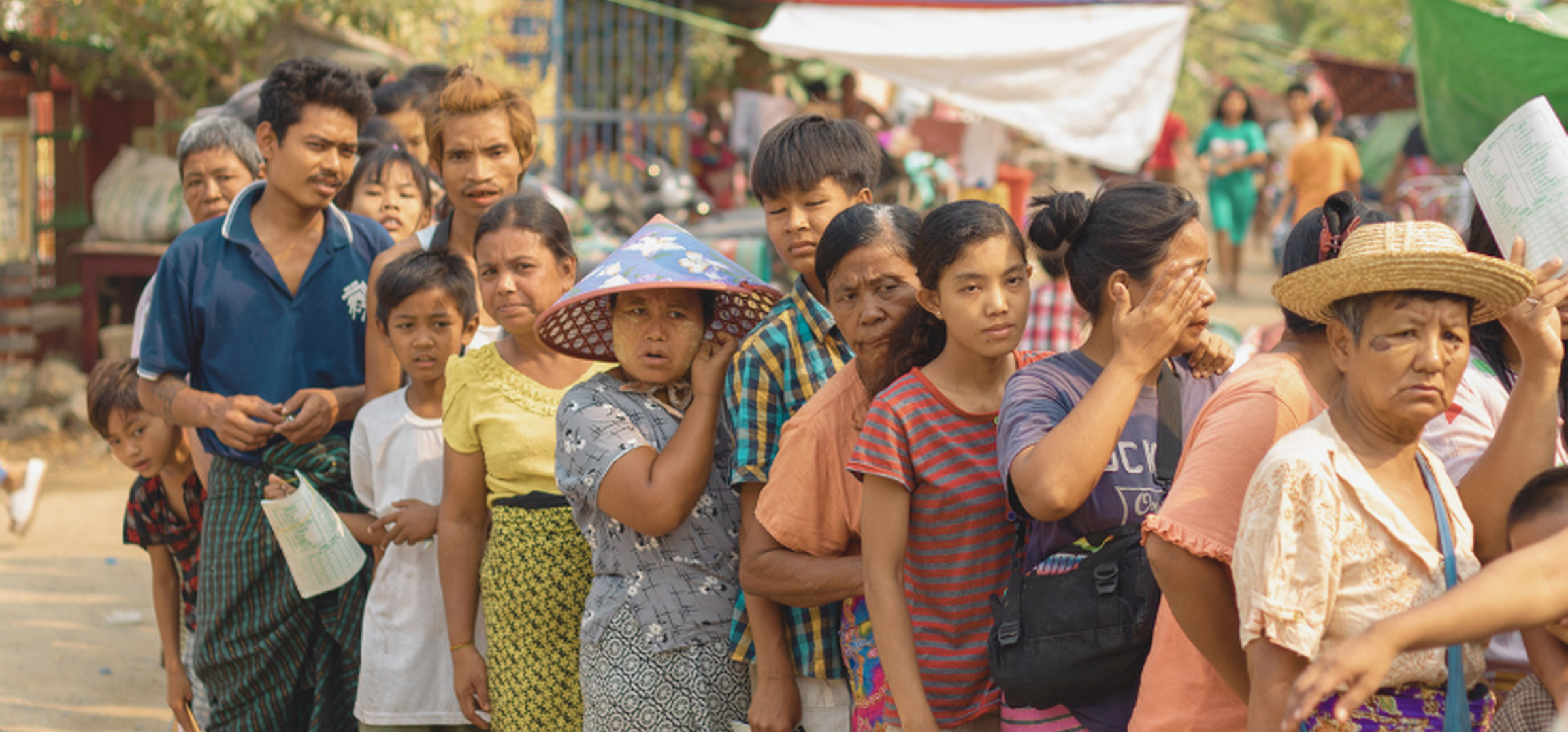How We Deliver Humanitarian Assistance Matters

Posted by Olivia Everett 29th July 2025 Opinion
Estimated Reading Time: 4 mins
In Gaza, the need is overwhelming. But the problem isn’t just scale. It’s delivery.
Yesterday, airdrops returned to Gaza. Jordan, the United Arab Emirates, and Israel parachuted aid packages into the north - the first time in months - after mounting evidence of widespread starvation. The IPC has warned that one in three people in Gaza hasn’t eaten in days. These are not routine deliveries. These are last resorts.
But this isn’t just another call about need. This is a call to look squarely at . Who gets aid, who doesn’t, and what it costs to receive it.
The situation
More than two million people in Gaza are living under impossible conditions. Access to food, water and medical care has collapsed.
Over 762,593 people have been displaced, many multiple times over. Hospitals are barely functioning. Children are starving. And for those still in the north, humanitarian assistance isn’t just limited, it’s almost entirely out of reach.
People are waiting for hours (sometimes days) just to get hold of one bag of flour. And even now, with the need this visible, only a symbolic amount of humanitarian assistance is getting through. Airdrops have replaced access. Spectacle has replaced systems.
“They shouldn’t be throwing aid on the ground, forcing us to run after it like dogs, just to get a bite of food… This is insulting and humiliating.”
Gaza resident, interviewed by CNN, July 2024
Airdrops dominate the headlines. They look like action. They feel like hope. But they are a last resort — and a dangerous one. The United Nations has called them inefficient, expensive, and potentially lethal. And they barely meet a fraction of the need.
One airdrop delivers the equivalent of a single truckload. Gaza, right now, needs around 500 trucks a day. Airdrops are covering less than 0.2% of that (equals less than one truck out of the 500/day requirement). They’re not a solution. They’re the illusion of one and a spectacle that soothes external audiences while leaving needs on the ground unmet.
We’ve seen this before
Whether in Gaza, Myanmar or the next emergency, the problem isn’t just logistics. It’s power. Who is seen, who is served, and who is left behind?
In Myanmar earlier this year, REACT Responders were deployed just 48 hours after the earthquake struck. Access was limited. Infrastructure was broken. But one thing became clear quickly: not everyone was receiving support. Aung Aung lives in Mandalay. We heard their story while deployed in Mandalay, following the 2025 Myanmar earthquake. It was one of many accounts that made clear when systems don’t account for vulnerability, people fall through the cracks.
“We didn’t get food because we couldn’t queue. Yesterday, there was no food for my children.”
What Aung Aung asked for wasn’t charity. It was fairness. His words echo one of the most basic principles in humanitarian response: that assistance should be distributed equitably, with dignity, and without discrimination.
The , the global reference point for humanitarian quality and accountability, makes this explicit through its Protection Principle 1: "Enhance people’s safety, dignity and rights, and avoid exposing them to further harm.
“I suggest food and daily essential things to be distributed systematically. Every household to receive equally. Instead of queuing or grabbing.”
Aung Aung, Mandalay
In disasters, we talk a lot about what is delivered.
But we must also ask: How? Who has to fight for it? Who is left out? Because in humanitarian emergencies, distribution is not just logistics. It’s dignity.
The principles we work by
At REACT, our Responders train to get to the people no one else can, or will. The hardest to reach. The most vulnerable. That principle shapes everything from how we assess what’s needed, to who we prioritise, and how we move when time is tight and access is broken. It’s not just about showing up fast. It’s about showing up right.
Our approach is underpinned by four core humanitarian principles of humanity, impartiality, neutrality, and independence. In this context, three are especially at play:
Humanity
Impartiality
Neutrality
Delivery must reflect the need
Delivery must reflect the need. What happened in Gaza is not unique, it’s a symptom of systems built for visibility, not viability. When access is treated as secondary to optics, the people who need support most are the first to be failed.
Myanmar showed us the same truth. When distribution isn’t built with the most vulnerable in mind - the ones who can’t queue, can’t run, can’t shout loud enough to be seen - it not longer can be called a humanitarian response. Without fair, local, deliberate systems, assistance risks tipping into performance. Because if your system keeps failing the same people, it isn’t broken. It’s functioning exactly as it was built. And that should keep all of us awake.
That is why our approach is grounded in our values and always put humanitarian principles first, act with courage and humility, build trust by being trustworthy, move towards danger when others step back. And we commit, fully, selflessly, to the people and places the system too often leaves behind. These aren’t slogans. They are our standard.
What needs to change
Aid can’t just be a moment of intervention. It has to be safe. It has to be fair. And above all, it has to be dignified. That starts with how it’s delivered. Safe ground access isn’t a bonus, it’s the absolute baseline. Systems have to be built around real lives, not assumptions. And dignity? That doesn’t get to be the thing we sacrifice for speed, scale, or media spectacle.
